|
Tao Te Ching
THE TAOISM OF LAO TZU
|
Tao Te Ching
|
The Book
The Taoism of Lao Tzu Explained. The great Taoist philosophy classic by Lao Tzu translated, and each of the 81 chapters extensively commented. Click the image to see the book at Amazon (paid link). |
How to Survive
How to live one's life is a complicated matter, occupying most of the Tao Te Ching. But also, merely to stay alive is difficult, and was even more so in the time of Lao Tzu. This chapter talks about how to survive at all.
Three out of ten follow life, which means that they reach old age. Three out of ten head for death. Lao Tzu probably refers to the tragedy of so many children not even reaching adulthood. Infant mortality was very high, actually all the way to the last couple of centuries, in China as well as in the Western world. The 30% should not be taken literally, but the figure was probably not that far from the truth.
Another three out of ten hurry from birth to death, in their desperation to make the most of it. Whether they actually die young because of it is not as significant as their incapacity to enjoy their lifespan. Whenever their death arrives, they will feel that life passed too quickly. That's the strange paradox of trying too hard to find the most time. It will slip away.
That makes nine out of ten. The tenth is the one who really knows how to relate to life, without desperation. What you cherish, but don't struggle too hard to keep, will not escape you. Life is like a cat. It enjoys your company if you don't try to enslave it and don't get too attached to it.
People who have this relaxed relation to life don't provoke death. Nor do they seek it. They walk through life with the spirit of a visitor, who enjoys the experience but doesn't for a moment expect it to last forever. They just live, as long as that is the case, and then they die when the time has come. They appreciate the former and accept the latter.
Without accepting death, they couldn't appreciate life. Without appreciating life, they could not accept death.
The killers of the world, whether they are animals, soldiers, or other threats, are not able to take aim at somebody who is indifferent. Such a person will not be made a target. To attack something, it has to have a defense. If not, then what to attack?
Those who know how to live don't display the intention of defending their lives by taking the lives of others, so they are no threats. Since they are unwilling to defend their lives, those lives seem to be of no value to others. Therefore others are not eager to take them.
Those who never consider taking the lives of others are no threats. So, there's no reason to attack them as some kind of preventive defense. Actually, only those who worry about death venture to impose it on others. And they are particularly anxious to do it on those who also fear death. Killing is mostly done for fear of death.
The ones who know how to live have no imminent fear of death. It's not something that governs their attitude or actions. Therefore it has no place in them. They just live when they live, and die when they die – like the rest of us, but without worrying so much about it.
NEXT
Tao Te Ching Explained
Preface
Introduction
Literature
translated and explained by Stefan Stenudd.
1 |
2 |
3 |
4 |
5 |
6 |
7 |
8 |
9 |
10 |
11 |
12 |
13 |
14 |
15 |
16 |
17 |
18 |
19 |
20 |
21 |
22 |
23 |
24 |
25 |
26 |
27 |
28 |
29 |
30 |
31 |
32 |
33 |
34 |
35 |
36 |
37 |
38 |
39 |
40 |
41 |
42 |
43 |
44 |
45 |
46 |
47 |
48 |
49 |
50 |
51 |
52 |
53 |
54 |
55 |
56 |
57 |
58 |
59 |
60 |
61 |
62 |
63 |
64 |
65 |
66 |
67 |
68 |
69 |
70 |
71 |
72 |
73 |
74 |
75 |
76 |
77 |
78 |
79 |
80 |
81 |
Tao Te Ching Explained
James Legge's Tao Te Ching
Aleister Crowley's Tao Te Ching
The 1st Chapter of Tao Te Ching in 76 Versions
Lao Tzu — Legendary Author of Tao Te Ching
My Taoism BooksClick the image to see the book at Amazon (paid link).
The Taoism of Lao Tzu Explained. The great Taoist philosophy classic by Lao Tzu translated, and each of the 81 chapters extensively commented. |
About Cookies
My Other Websites:
I Ching Online
The 64 hexagrams of the Chinese classic I Ching and what they mean in divination. Try it online for free.
Qi Energy Exercises
The ancient Chinese life energy qi (chi) explained, with simple instructions on how to exercise it.
Life Energy
The many ancient and modern life force beliefs all over the world explained and compared.
Taoismen på svenska
Other Books by Stefan Stenudd
Click the image to see the book at Amazon (paid link).
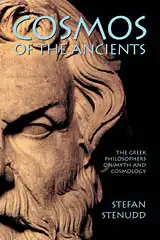 Cosmos of the Ancients
Cosmos of the Ancients
The Greek philosophers and what they thought about cosmology, myth, and the gods.
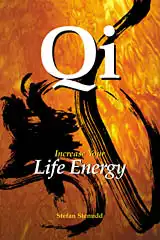 Qi — Increase Your Life Energy
Qi — Increase Your Life Energy
The life energy qi (also chi or ki) explained, with exercises on how to awaken, increase and use it.
 Aikido Principles
Aikido Principles
Basic concepts of the peaceful martial art. Aikido principles, philosophy, and fundamental ideas.
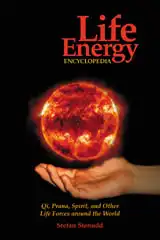 Life Energy Encyclopedia
Life Energy Encyclopedia
Qi, prana, spirit, ruach, pneuma, and many other life forces around the world explained and compared.
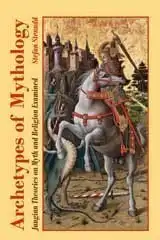 Archetypes of Mythology
Archetypes of Mythology
Jungian theories on myth and religion examined, from Carl G. Jung to Jordan B. Peterson.
 Stefan Stenudd
Stefan Stenudd
About me
I'm a Swedish author and aikido instructor. In addition to fiction, I've written books about Taoism and other East Asian traditions. I'm also an historian of ideas, researching ancient thought and mythology. Click the image to get to my personal website.Contact

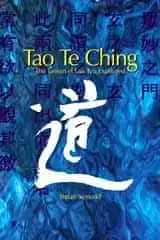 Tao Te Ching
Tao Te Ching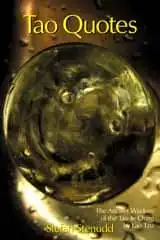 Tao Quotes
Tao Quotes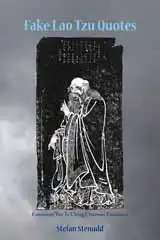 Fake Lao Tzu Quotes
Fake Lao Tzu Quotes